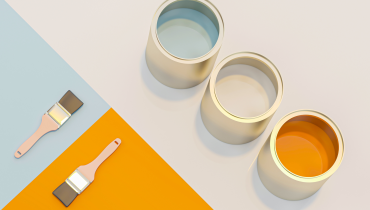Cleaning your furniture not only enhances its beauty, but also extends its life. While cleaning a full house’s worth of furniture may appear to be a difficult undertaking, it is not. Simple dusting and vacuuming, as well as semi-annual deep cleanings, will keep your furniture looking excellent most of the time.
Decide Type Of Furniture
Make a decision on the sort of finish you want for your furniture. If you’re not sure, start with a simple cleaner and work your way up to more powerful cleaning solutions based on how the furniture reacts (or lack of one).
Wipe The Wood Dust
Dust and lose particles should be wiped off the wood. Clean the surface of the piece of furniture with a clean cloth, loosening and removing any dust and filth. Feather dusters should not be used on wood furniture due to the risk of harm from their quills. Instead, use cloth.
Use Mild Soap And Water
Dirt and stains are removed with water and mild soap. 1 to 2 teaspoons (15 to 30 mL) mild dish detergent in a small bucket of warm water Soak your cleaning cloth for a few seconds in soapy water, then wring it out until it’s barely damp. Then wipe down the wood furniture with the towel. After that, dry the furniture with a clean cloth.
Rub With Mineral Spirits
If the soap doesn’t work, use mineral spirits to massage the wood. Mineral spirits, such as paint thinner, are excellent for eliminating built-up dirt. Fill a cloth with spirits and rub your furniture carefully. Make sure you’re dealing with mineral spirits in a well-ventilated environment. Wipe away any residual cleaning with a damp cloth.
Make Turpentine Mixture
Make a turpentine mixture to use on finished wood. Combine three-quarters cup boiling linseed oil and one-quarter cup turpentine in a container and aggressively stir. Both of these products are readily available at most hardware stores.
The turpentine solution should be incorporated into the wood. Pour some on a steel wool pad and some on the tabletop. Rub the mixture in with the grain. After that, use a soft rag to polish it. This combination works well with both painted and untreated wood.
Use Lemon Oil
You may use lemon oil to polish waxed or varnished surfaces. Wipe the thing clean with a damp cloth and a few drops of oil. Then use a soft cloth to buff the surface, leaving as little residue as possible.
Use Furniture Wax
Use furniture wax to protect unwaxed furniture. Apply it liberally in the direction of the grain using cheesecloth. Buff with a different towel after that.
Final Verdict
You must act quickly if you see discoloration or patches. Keep your furniture clean by cleaning it on a regular basis and never allowing a spill to set in. House dogs should be trained to stay off the furniture since their fur, nails, and spit may discolor it. Keep your cats’ claws trimmed and brush them on a regular basis to reduce shedding and loose hair.







